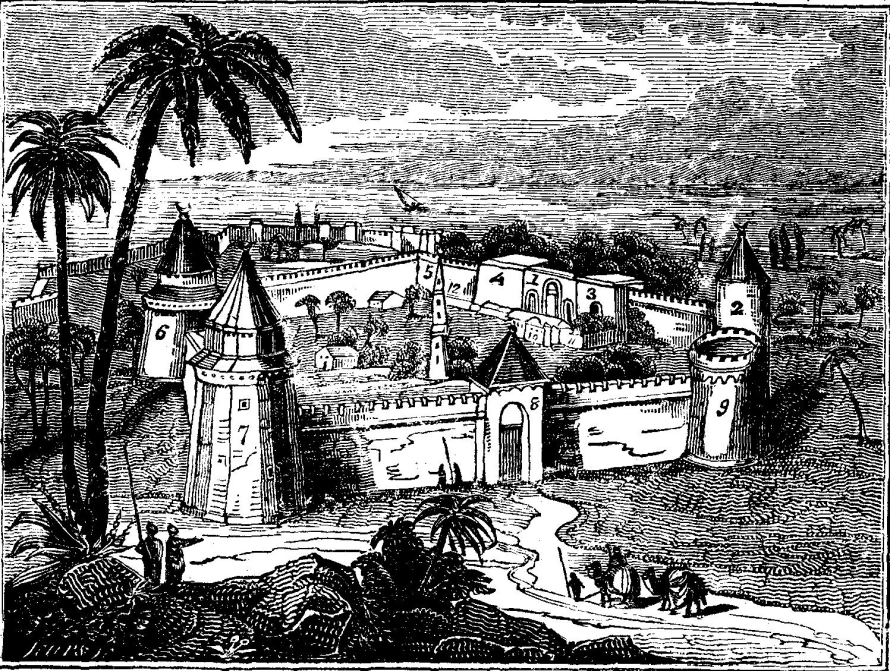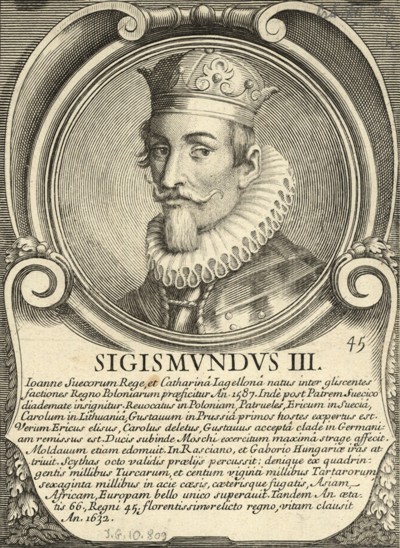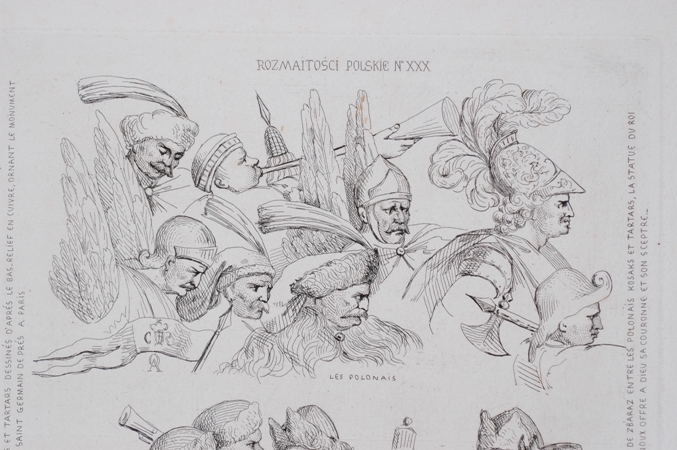Yedikule – the Turkish Castle of the Seven Towers
Yedikule (The Fortress of the Seven Towers), in the old-time Poland better known under its phonetic name Jedykuła, was the Istanbul fortress closing (from the South) with its fortifications the ring of the city walls of Constantinople. The first fortress in this place was built during the reign of John I Tzimiskes (969-976) who decided to reinforce the area of the so-called Golden Gate, once converted from the triumphal arch of Emperor Theodosius I. The original castle was called, after its five defensive towers, the Pentapyrgion. Destroyed during the Fourth Crusade, the fort was rebuilt in 1350 by John VI Kantakouzenos. The castle was now guarded by five towers, which, along with the twin towers of the Golden Gate, made seven, hence the name Heptapyrgion. In 1391, John V Palaeologus was forced by Sultan Bayezid I to demolish the fortress and it was as late as 1458 that Mehmed II ordered to rebuilt the stronghold again. The fortress with its four internal and three external towers was called as before, but now in the Turkish version – Yedikule Hisar (Fortress of the Seven Towers). Heavily fortified, it served as a treasury. When, at Murad III’s command, the treasury was moved to the Sultan's palace, the fortress was converted into a heavy prison.
And it is with Yedikule casemates that numerous recollections of Poles who suffered torments in the dungeon are associated, as well as the memory of those who never left the gates alive. Zygmunt Gloger wrote: “There was hardly a noble family in the Polish nation whose closer or further relative taken captive had not experienced the torture of Yedikule, which was stained with the martyr’s blood of the Wiśniowiecki or Korecki families”. No wonder thus that our old-time poets and prose writers used the word jedykuła for prison in a general sense. When Ignacy Hołowiński, Archbishop of Mogilev, arrived in Istanbul in the mid-19th century, the already closed prison made a depressing impression on him. “I was guided around that prison, once so terrible, by a Negro guard who matched the place perfectly with a huge bunch of keys jangling from his belt, which signified his rank. It’s sad to be in this prison: wherever you cast an eye, you see a memento of human sorrow: small marble plaques on the walls bear a multitude of inscriptions in Latin, French and Italian wherewith the prisoners of the High Porte wanted to immortalize the memory of their captivity.” The prisoners of the castle included merchants, sailors, prisoners of war, and even foreign diplomats who had not managed to leave the borders of the Sultan's empire on time when a war with their countries broke out, or the Sultan decided to show the boundlessness of his power or vainglory. Hostages were kept there who in the future could be useful in implementing the plans of the Sultan’s diplomacy.
A distinctive figure among them was Yurii Khmelnytsky, son of Bohdan. “Sold in the Crimea, recognized and sent to Constantinople, he was imprisoned in chains in the Castle of the Seven Towers.” After an attempt to escape “sentenced to whipping, chained to the walls of the prison, had spent twelve years in this state. One day the prison doors opened [...] with grandeur they lead him to the Sultan, who appoints him Prince and Hospodar of Ruthenia.” Also the allies who fell from grace landed in the castle; that used to happen to Wallachian boyars. “After three weeks, the unhappy Brâncoveanu family arrived in Constantinople; they were immediately put in the state prison in the Castle of the Seven Towers. The prince was thrown into a dark dungeon, his sons, sons-in-law and his wife were given a little more illuminated rooms. All their packages and wardrobe were taken from them, only the clothes in which they were dressed were left to them.” The last prisoners were still held here in 1837. However, even the Turkish rulers were not free from the vision of the rest of their lives in the shadow of the Seven Towers. In 1622, Sultan Osman II was imprisoned there and executed by the Janissaries.
After the defeat of the Commonwealth’s army at Cecora, Stanisław Koniecpolski, then the Field Hetman of the Crown, was imprisoned in the fortress for three years. He was bought out only in 1623 by the grand Polish mission headed by Krzysztof Zbaraski. Mikołaj Potocki, Łukasz Żółkiewski, son of the hetman, with his cousin Jan, and Marcin Kazanowski were also abducted and imprisoned in Constantinople. It was there that the tragic fate of Colonel Samuel Korecki (b. 1586), bearer of Pogonia coat of arms, an outstanding commander and Zagończyk (see article in the Wilanów Silva Rerum) was fulfilled on June 27, 1622. Gloger wrote: “our heroes, sentenced to death, were executed by being hanged by the ribs on an iron hook”. Such a cruel end befell the famous Zagończyk, the Starosta of Bracław and Winnica, Dymitr Wiśniowiecki who, captured by a trick, in 1563 was incarcerated in the Istanbul prison. According to the borderland Cossacks’ legend: “The Sultan offered him many favours if he decided to accept the faith of Muhammad. When Wiszniowiecki scornfully declined the ungodly offer, the Turks hanged him on an iron hook on the Galata tower. Wiszniowiecki stayed alive for three days, praising the righteous God and blaspheming the prophet.” Stanisław Temberski, professor of the Academy of Krakow and the King’s secretary who died in 1679, added in his annals: “After two days of hanging on the hook, he asked for a bow and arrows with which he killed several Turks; having heard of it, Sultan Selim wanted to see the brave man. Wiszniowiecki, who had one more arrow left, discharged it at the Sultan, but when he missed, the men surrounding Selim killed him with their arrows”. Gabriel Rzączyński in his Historia naturalis curiosa Regni Poloniae published in 1721, added an element of macabre to the legend, writing that after his death “the Turks extracted his heart and, having divided it among them, devoured it, and that was for acquiring the fortitude which this brave knight had had”.
François Pouqueville, a diplomat and member of the Institut de France, imprisoned in the castle in the years 1799-1801, described his experiences in the book Voyage en Morée, à Constantinople, en Albanie, et dans plusieurs autres parties de l'Empire Othoman, pendant les années 1798, 1799, 1800 et 1801 (Paris, 1805). Pouqueville wrote about the place of his imprisonment: “And at last, lofty towers filled with fetters, chains and old time weapons, graves, ruins; wells of blood, terrible tortures, vaults cold and hollow, under which there are many texts from Alkoran, shrill cries of owls and vultures mixed with the sound of sea billows”. Archbishop Hołowiński recollections were less pompous: “This castle surrounded by pentagon–shaped walls towers over the shores of the Marmara Sea: the walls are high, and inside at the top there is space around, a few steps wide, for walking. Today this horrible prison is empty and neglected. A small mosque and trees adorn the courtyard: and the house where envoys were kept is demolished, no trace left. Besides the seven larger towers, five of which are circular and two square, there are some smaller ones along the walls. Opposite the main entry gate, on the other side of the courtyard, there is the famous Golden Gate, but none of its former glory remains. I climbed the tallest tower: what a nice view of the city and the huge water mirrors! The walls of the castle are covered with a kind of hedgerows of pretty morning glory. [...] I left this habitat of weeping and gnashing of teeth which had witnessed so many dreadful tragedies.”


